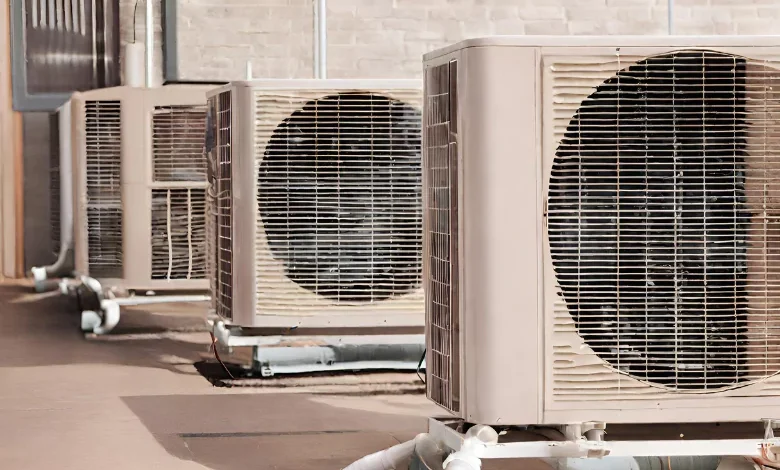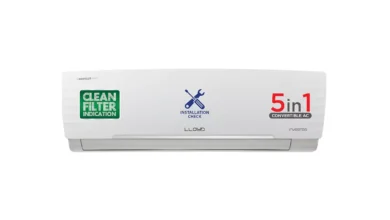Reducing Carbon Footprint: Energy Efficiency in Cooling

In the face of accelerating climate change and an urgent global push towards sustainability, the spotlight has intensified on the need to reduce carbon footprints across various sectors. Among the substantial contributors to energy consumption, cooling systems, especially air conditioners, play a pivotal role. As the call for environmental responsibility grows louder, a profound understanding of energy-efficient cooling becomes imperative. In this extensive exploration, we will delve deep into the complexities of energy efficiency in cooling, examining the challenges, innovative solutions, and the potential to reshape our environmental impact.
Also read: Best AC in India 2024
The Carbon Conundrum: Unveiling the Energy Intensity of Cooling
The journey towards understanding energy-efficient cooling begins with acknowledging the significant carbon footprint associated with traditional cooling methods. Outdated technologies and inefficient systems contribute substantially to greenhouse gas emissions. As the demand for cooling continues to rise globally, finding sustainable alternatives becomes not just a choice but a necessity for curbing climate change.
The Evolution of Energy-Efficient Cooling Technologies
1. SEER Ratings: The Guiding Light in Efficiency
Seasonal Energy Efficiency Ratio (SEER) ratings act as a compass in the realm of energy-efficient cooling. These ratings provide a quantifiable measure of a system’s efficiency by assessing how effectively it converts electrical energy into cooling power over an entire season. A higher SEER rating signifies a more energy-efficient system, demanding less electricity to produce the same cooling output. Embracing air conditioners with elevated SEER ratings is a tangible step towards reducing energy consumption and, consequently, mitigating carbon emissions.
2. Smart Thermostats: Precision in Control
The advent of smart thermostats represents a paradigm shift in temperature control. These intelligent devices transcend the conventional role of thermostats, evolving into systems that learn user preferences, adapt to occupancy patterns, and optimize cooling based on external conditions. The precision and adaptability of smart thermostats contribute not only to cost savings but also to a significant reduction in unnecessary energy consumption, leading to a diminished carbon footprint.
The Impact of System Design and Maintenance
1. Proper Sizing: Efficiency at its Core
An often overlooked but critical aspect of energy-efficient cooling lies in the proper sizing of cooling systems. Oversized systems not only lead to unnecessary energy consumption but also compromise overall efficiency. A well-designed system, tailored to the specific needs of a space, maximizes efficiency and minimizes environmental impact. Striking the right balance in system sizing is foundational to achieving sustainable cooling.
2. Regular Maintenance: A Green Habit
Routine maintenance emerges as a green habit with far-reaching implications. Clean filters, well-maintained components, and optimal refrigerant levels are essential for the optimal performance of cooling systems. Beyond the immediate benefits of improved efficiency, regular maintenance extends the lifespan of the system, reducing the need for premature replacements and contributing to long-term environmental sustainability.
Harnessing Renewable Energy for Cooling
1. Solar-Powered Cooling: A Sustainable Frontier
The integration of renewable energy sources into cooling systems opens new frontiers in sustainability. Solar-powered air conditioning units harness the abundant energy from the sun, reducing reliance on conventional power sources. By tapping into this sustainable and clean energy source, solar-powered cooling systems significantly lessen the environmental impact associated with traditional energy-intensive cooling methods.
2. Geothermal Cooling: Tapping into Earth’s Resources
Geothermal cooling systems utilize the stable temperature of the Earth’s subsurface to efficiently cool indoor spaces. By tapping into this renewable and constant energy source, geothermal systems provide a sustainable alternative to traditional air conditioning methods. The potential of geothermal cooling lies not only in energy efficiency but also in its minimal environmental impact.
The Role of Building Design and Insulation
1. Passive Cooling Strategies: Embracing Natural Comfort
Building designs that incorporate passive cooling strategies capitalize on natural elements to maintain comfortable temperatures. Strategic placement of windows, proper insulation, and intelligent use of shading can significantly reduce the need for active cooling, lowering energy consumption and carbon emissions. Embracing passive cooling strategies is a testament to the symbiotic relationship between architecture and environmental responsibility.
2. Green Roofs and Urban Planning: A Holistic Approach to Cooling
The implementation of green roofs in urban areas can contribute to cooling strategies. Green roofs absorb sunlight, provide insulation, and reduce the urban heat island effect. When coupled with thoughtful urban planning, these initiatives create cooler, more sustainable environments. The role of green roofs extends beyond individual buildings, contributing to the overall environmental well-being of urban spaces.
Shaping a Sustainable Cooling Future: A Collective Responsibility
As we delve deeper into the imperative to reduce carbon footprints, energy-efficient cooling emerges as a linchpin in the larger sustainability puzzle. The choices we make in selecting, designing, and maintaining cooling systems influence not only our immediate comfort but also the health of the planet. By embracing energy-efficient technologies, renewable energy sources, and sustainable building practices, individuals and businesses alike can actively contribute to a cooler and more sustainable future.
Conclusion
: A Call to Action
In conclusion, the journey towards energy-efficient cooling is a multi-faceted exploration that demands a holistic approach. From understanding the nuances of SEER ratings to embracing renewable energy sources, each facet contributes to a collective effort to reshape our environmental impact. It is not merely a technological shift but a paradigm change in how we approach comfort and sustainability.
As individuals, businesses, and communities, we stand at a pivotal juncture where choices we make today will reverberate for generations to come. The call to action is clear: to embrace energy efficiency in cooling is not just a technological necessity but a moral imperative. It is a commitment to a sustainable future where the cool comfort we seek coexists harmoniously with environmental responsibility. The road ahead may be challenging, but it is a path we must tread for the well-being of our planet and the generations that follow.






